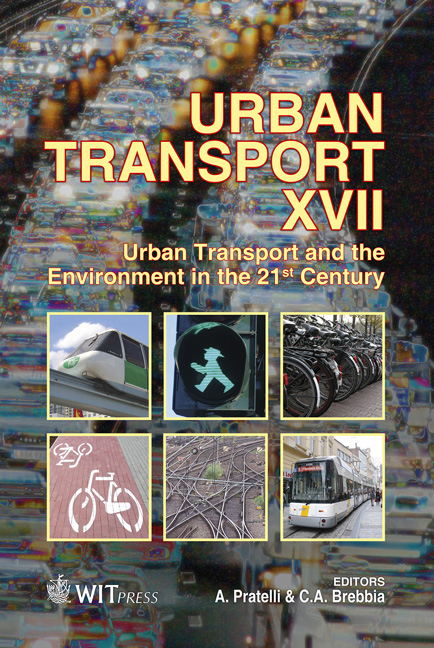Metro Line Implementation In A European City
Price
Free (open access)
Transaction
Volume
116
Pages
10
Page Range
393 - 402
Published
2011
Size
2,873 kb
Paper DOI
10.2495/UT110331
Copyright
WIT Press
Author(s)
N. M. Gomes Rocha
Abstract
The train is the earliest form of mass transport, and with technological evolution it has become far less of a polluter. Green and sustainable transportation is essential for every region for social and economic growth. This paper will analyse specificities of a European urban rail network. Offer/demand disequilibrium is identified and potential solutions are presented. Because the geographical area is vast and data is dissipated, it is essential to select the most accurate information available. A first step is to determine disequilibrium between existing capacity and current rail transport demand. Existing capacity is total daily number of \“passengers” transported in each rail network zone. Current transport demand is total number of \“citizens” that need rail transport for daily displacements in each zone. Current rail transport demand estimation is based on regression analyse tools applied to Local Transport Authority annual mobility reports. Demand is also estimated for new line entrance in service year, plus ten, twenty and thirty years. These long term previsions are essential to analyse offer/demand evolution process with reversed impacts in land-use politics. Different transport options are going to be analysed. Its economical and technical viability will be considered to support a final solution. This paper will start with a city and existing transport network briefing. This will be followed by a service characterization. Existing capacity is determined to establish a workable level. Current transport demand and its characteristics will precede demand variation. Main factors influencing these variables are presented. Disequilibrium and potential solutions are going to be evaluated before conclusion with economical analysis. Keywords: urban rail transport, offer/demand estimation process, transport projects economical analyse, existing capacity, current demand.
Keywords
urban rail transport, offer/demand estimation process, transport projects economical analyse, existing capacity, current demand





